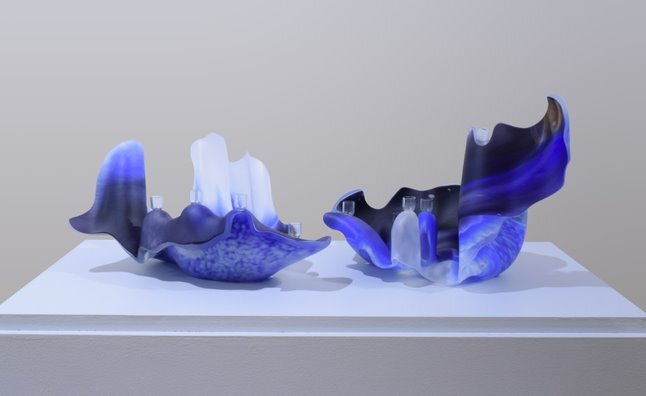Menorah #2
Marvin Lipofsky (1938-2016)
Hand blown glass; cut, sandblasted, acid polished
United States, 1998
Cincinnati Skirball Museum; given by the family of Judy Lucas in honor of her dedication to the Skirball Museum and special birthday
Hanukkah, a joyous winter holiday, commemorates the military victory in 165 BCE of a small number of Jews, led by Judah Maccabee, over the ruling Syrian-Greek government. The Jews had been commanded to worship only Greek idols under penalty of death. When the Maccabees reconquered Jerusalem, they found that the Syrians had desecrated the Temple. According to the Talmud, a commentary on the Torah, the Maccabees cleansed and rededicated the Temple by lighting its seven-branched menorah, or candelabrum, with a small amount of oil that remained. Miraculously, the oil, enough for only one day, burned for the eight days of the Festival of Dedication—Hanukkah—in Hebrew.
To observe the victory and the miracle, Hanukkah lights are kindled for eight days. A special menorah, called a hanukkiyah, holds nine candles. Since the light may not be used for work or illumination, a shamash, or servant light, is lit first and used to kindle the others. On the first night of Hanukkah, one light is lit, with an additional candle lit on each subsequent night. Traditionally, the lighted Hanukkah lamp is placed near a window in the home.
A renowned San Francisco Bay Area teacher and sculptor who worked with glass, Marvin Lipofsky was among the first to work with Harvey Littleton, who was the founder of the American Studio Art Movement at the University of Wisconsin, Madison. Lipofsky built and directed the glass program at the University of California, Berkeley and developed the glass program at the California College of the Arts. He worked in studios all over the world creating beautiful glass works in over 30 countries.
Although Lipofsky did not usually make Judaica pieces, this hanukkiyah appeared in a Skirball exhibition of contemporary Judaica in 2000-2001. The rhythmic forms of this piece, which suggest both abstract and organic sources, are typical of Lipofsky’s style. This menorah actually consists of two vessels. The shamash is at the highest point, which is traditional placement for the servant candle. The undulating shape of the menorah was described by the artist as attempting to “direct the viewer’s attention to the positive and negative, the solid convexity of a curve and the emptiness of its absence.”

